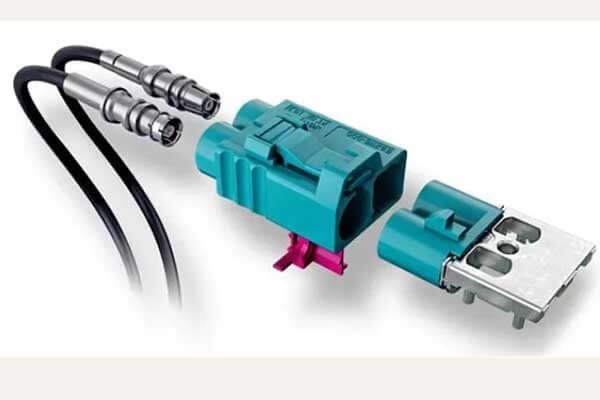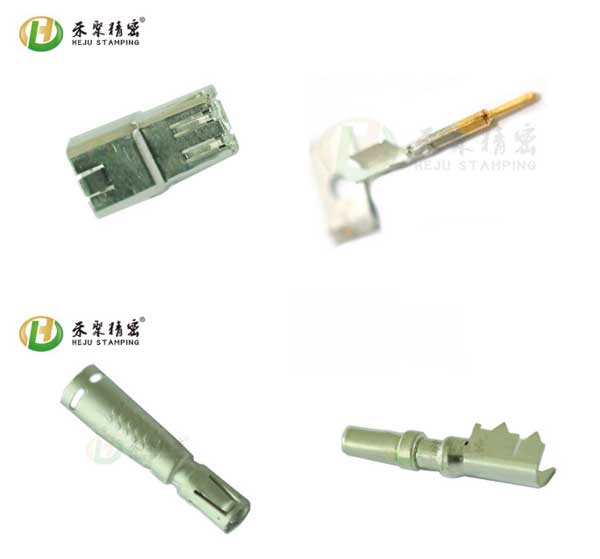Features and Applications of FAKRA Wiring Harness-Automotive Wire Connector Terminals Manufacturer
As cars continue to develop towards intelligence, the demand for automotive built-in devices is growing. FAKRA is a connector system designed specifically to meet the high-frequency transmission standards in the automotive industry.
Features of FAKRA Connectors
- Standardized interface: FAKRA connectors follow ISO 20860-1 and USCAR-17 standards, ensuring compatibility with global automakers.
- Color coding: To simplify the installation process and prevent incorrect connections, FAKRA connectors use a unique color coding system, with each color representing a different application and function.

Industry Applications of FAKRA Harnesses
High-frequency transmission: These connectors are ideal for GPS, satellite radio, Bluetooth, and other high-frequency applications in modern vehicles. They feature a secondary locking mechanism to guarantee a secure connection and resistance to vibrations, making them well-suited for challenging automotive environments. FAKRA connectors are offered in straight and angled versions, as well as harnesses with various wire lengths and types to accommodate diverse installation requirements.
With the advancement of 5G technology and the development of vehicle-to-everything (V2X) technology, FAKRA harnesses will face higher performance requirements. Future FAKRA connectors may need to support higher transmission rates and lower latency to meet the needs of autonomous driving and real-time communication between vehicles. In addition, as car designs tend to be compact, FAKRA connectors and harnesses also need to be more miniaturized and integrated to be used in space-constrained environments.
FAKRA harnesses are widely utilized in the automotive industry for wireless communication systems, including car GPS navigation, phone systems, and Bluetooth connections. They are engineered to be waterproof, resistant to vibration, and capable of withstanding high temperatures, ensuring stable and reliable connections. These harnesses facilitate the connection of vehicle antennas, GPS antennas, and wireless modules, allowing for the transmission of signals to vehicle-mounted devices, thus enabling wireless communication functions within the car.
Development Direction of FAKRA Harnesses
The future technical development direction primarily involves transitioning from the current 4GHz & 12GHz frequency domains to the millimeter wave frequency domain above 28GHz. The focus is on creating solutions that are light, thin, short, and miniaturized, with ultra-low loss. To minimize loss, we will develop connectors tailored to ultra-low loss wires. Additionally, there will be a focus on creating waterproof and shock-resistant connectors to meet the high safety specifications and harsh usage environments in automotive applications.
However, there is still a certain gap between local manufacturers and European and American manufacturers. The mainstream manufacturers are still dominated by foreign brands. However, it is worth affirming that with the help of delivery cycle, response speed, and labor cost advantages, the gap is gradually narrowing, and domestic substitution is also feasible.
Hejustamping-Professional Automotive Wire Connector Terminals Manufacturer
Dongguan Heju Precision Electronic Technology Co., Ltd. specializes in manufacturing and designing automotive wire connector terminals. The company obtained the IATF16949 system certification in 2016. The Fakra terminals produced by the company have a stable signal transmission function and meet the quality standards of imported brands. Dongguan Heju has played a key role in assisting manufacturers such as AVIC Optronics and Changchun Jieyi in completing production and maintaining long-term cooperation. The company’s support services and quality inspection system are exemplary. And with 39 imported punching machines, they ensure efficient production and strong delivery capabilities. Dongguan Heju is also capable of customizing products to meet the specific needs of its customers in order to achieve domestic substitution.
